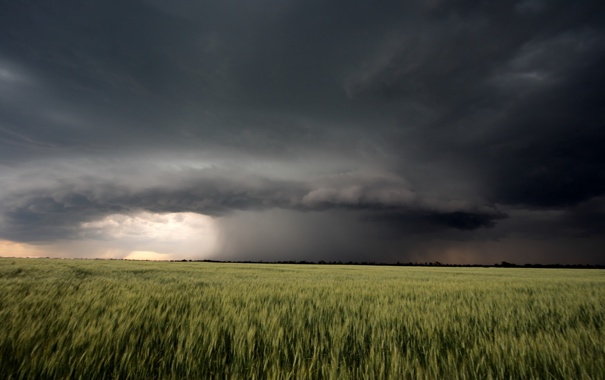La Nina affect on Australia and India questioned

There are conflicting views on what impact a third consecutive La Nina weather event will have on crops in India and Australia.
Many weather models anticipate ongoing La Nina conditions throughout 2022, according to presenters at the International Grains Council’s Grains Conference 2022.
La Nina years typically result in better-than-average monsoon rainfall for India, said Fahad Vaipei, vice-president of Olam, a Singapore-based agribusiness company.
India’s wheat exports tend to surge during La Nina periods, like they have the last couple years.
Exports are estimated at 4.5 to five million tonnes in 2022-23, which is about half of what was initially forecast due to a government ban caused by excessive heat during harvest.
The last time India had a stretch of solid exports was during the La Nina years of 2011-12 through 2013-14. Exports topped six million tonnes in 2012-13.
“These high production years during La Nina have helped India export and is helping cap world wheat prices during years with high wheat prices,” said Vaipei.
With La Nina forecast to remain in place through 2022 he is forecasting another bumper crop will be harvested in India in April 2023 and another strong export program to ensue.
It would also boost India’s pulse production, which wouldn’t be good for Canadian pea and lentil farmers.
However, according to Drew Lerner, president of World Weather Inc., this year’s La Nina will be many times weaker than the previous two events.
“Its influence on world weather is going to be meagre at best,” he said in a phone interview.
Lerner believes India’s weather will be dictated instead by the Indian Ocean Dipole, which is in a negative phase.
That means cooler temperatures in the Indian Ocean and less water vapor feeding the southwest monsoons.
That is why he believes the summer monsoon season will be disappointing despite La Nina being around.
Carlos Mera, head of agro-commodity research at Rabobank, said that La Nina is usually associated with poor wheat crops around the world.
That is why he is calling for a third consecutive deficit in global wheat production in 2022-23, especially when adding in the problems caused by the war in Ukraine.
This year’s deficit will be the largest of the three at over 10 million tonnes. The last time there was a deficit that large was 2012-13 following two consecutive La Nina years.
“Where are we going to find more stocks?” he said in a pre-recorded presentation for the conference.
“I think it’s going to be a difficult task.”
Both winter wheat and spring wheat crops are in trouble in the United States and there is dryness in other key exporting regions like the European Union and Argentina.
Mera noted that while La Nina is bad news for many wheat-producing regions of the world it is good news for Australia.
Preliminary estimates call for 32.6 million tonnes of production in that country. That would be down from the record 36.3 million tonnes harvested in 2021 but would still be the third-largest crop in Australia’s history.
A third consecutive La Nina is also expected to boost production of other grains, oilseeds and pulses in Australia.
Lerner is once again skeptical of that forecast because he believes it is going to be a weak La Nina that may have completely fizzled out by the time Australia’s spring and summer season rolls around in the September through March period.
However, he did note that while a negative Indian Ocean Dipole typically cools the Indian Ocean it also results in warmer ocean temperatures off the coast of Sumatra.
That in turn can result in more rainfall in central and southeast Australia during the country’s winter months.
That means South Australia, Victoria and New South Wales could get a good drink of water leading up to spring planting.
If La Nina hangs around and is strong enough it would also enhance precipitation in Queensland and New South Wales during the summer months, but he doubts that will happen.
For now, Lerner is forecasting normal moisture conditions for Australia’s summer crop.
Read also
Wheat in Southern Brazil Impacted by Dry Weather and Frosts
Oilseed Industry. Leaders and Strategies in the Times of a Great Change
Black Sea & Danube Region: Oilseed and Vegoil Markets Within Ongoing Transfor...
Serbia. The drought will cause extremely high losses for farmers this year
2023/24 Safrinha Corn in Brazil 91% Harvested
Write to us
Our manager will contact you soon



